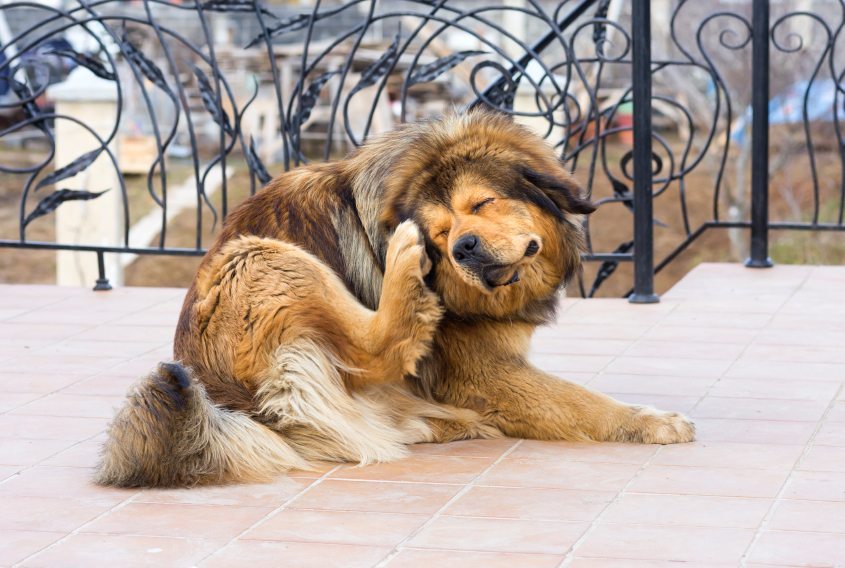 Realizing that your dog might be suffering from allergies is a frustrating situation, to say the least.
Realizing that your dog might be suffering from allergies is a frustrating situation, to say the least.
Nobody wants to watch their pup suffer through scratchy, sleepless nights. The fact that getting down the root of the problem is a matter of trial and error doesn’t make matters much easier, does it?
Thankfully, there are steps you can take to help your furry friend live a healthier, happy life. It’s all about taking action and learning how to manage their symptoms by taking a specific series of steps. Below we’ve broken down what all pet owner should do once they realize their dog might be showing symptoms of allergies.
Understand What Their Triggers Might Be
First thing’s first: you need to watch your pet closely to see what they might be reacting to in real-time. Just like you’d keep a journal for yourself, you should closely watch your dog’s behavior including what it’s eating, the materials it comes in contact with and what happens when it’s outdoors.
For starters, some common food and pet allergy triggers include…
Rice, eggs, corn wheat and soy
- Environmental allergies related to pollen or dust mites
- Bites from fleas
When in doubt, you can also talk out any allergy concerns with your vet: some breeds are more susceptible to allergies than others, after all.
Make Sure They Get Their Exercise
Conventional wisdom tells us that because your dog has allergies, they’ll be confined to an inactive, “homebody” lifestyle.
That shouldn’t be the case at all. For the sake of both keeping your dog acclimated with the outdoors and living an otherwise regular lifestyle, consistent walks are a must-do. Not getting enough exercise will inevitably lead to other problems down the road.
Just make sure to keep an eye on your pet to avoid getting into bushes or long gross, attempting as best as you can to stay on the sidewalk. Likewise, make sure anyone else who takes care of your dog knows this, too. If you hire a dog walker from Wag! or have someone in your family watch or board your pet, make it clear what their limits are outdoors.
Invest in Limited-Ingredient Dog Foods
As a rule of thumb, “less is more” when it comes to your pet food ingredient list.
Even if your dog isn’t prone to food allergies, it’s probably a good idea to invest in brands that aren’t brimming with cheap fillers. In the case that your dog is prescribed dog food, do not assume that you’re just being ripped off: there’s a world of difference between vet-prescribed food and supermarket fare.
Get Them Tested for Allergies
If you’re truly desperate and an elimination diet doesn’t seem to be working, a blood test is always an option. Of course, blood allergy tests for dogs can indeed get pricey; however, it might be your only course of action. Think of it this way, though: you’ll save money in the long-run by figuring out exactly what’s wrong versus endlessly guessing.
Bathe Your Pooch on a Regular Basis
There are no two ways about it: a clean dog is a happy dog.
Much like dog food, you can find limited ingredient shampoos that contain natural ingredients like aloe vera and oatmeal. If your pup has skin allergies, regular baths with such items is a must-do to provide relief and prevent further infections.
Keep Your House as Clean as Possible
Finally, dealing with household allergens like mold and dust mites is a win-win situation for you and your dog. Small habits such as regularly washing your bed sheets, dusting your house and changing your air filters can be game-changers for allergy-sufferers (canine or otherwise).
Don’t assume that your pup can’t live a happy life just because they suffer from allergies. Instead, take a proactive approach with the tips outlined above: you may be surprised at just how quickly they clear up when you do.











